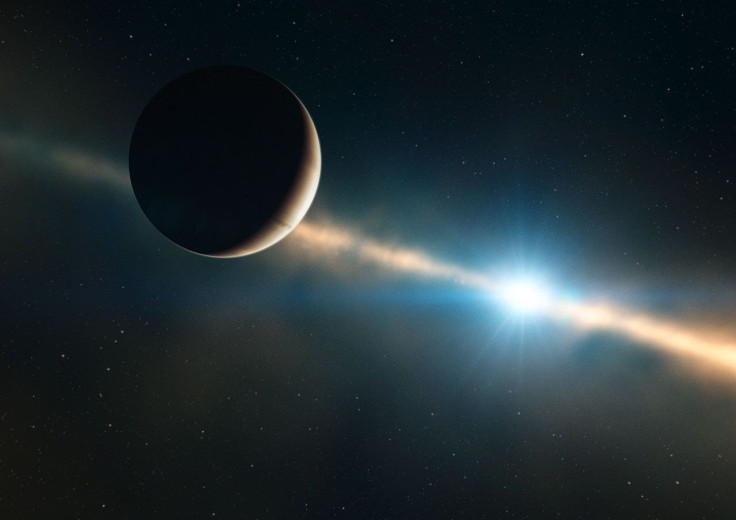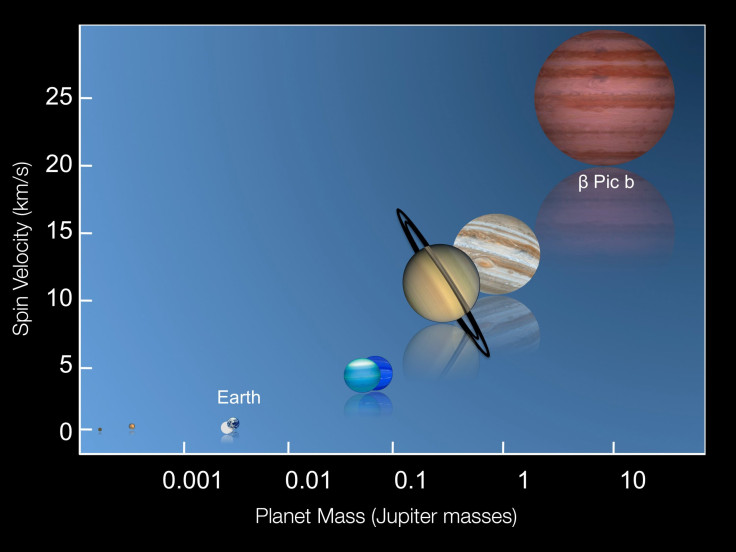Meet Beta Pictoris b, The Exoplanet With An 8-Hour Day, Located 63 Light-Years From Earth
Astronomers, for the first time, have been able to clock the rotation rate of an exoplanet. Based on recent data, a day on the exoplanet Beta Pictoris b lasts just eight hours.

Beta Pictoris b is approximately 20 million years old and orbits Beta Pictoris, which is located in the constellation Pictor. The exoplanet has a mass 3,000 times that of Earth, according to the European Southern Observatory.
Researchers from Leiden University and the Netherlands Institute for Space Research, using the ESO’s Very Large Telescope, were able to measure how fast the exoplanet spins by observing the Doppler Effect, the change in wavelength due to relative motion, of Beta Pictoris b to Earth. The researchers used the CRyogenic high-resolution InfraRed Echelle Spectrograph (CRIRES) instrument to separate the observed light into different wavelengths, which were used to measure the rotation rate of the exoplanet by comparing it with its host star.
“Using this technique, we find that different parts of the planet’s surface are moving towards or away from us at different speeds, which can only mean that the planet is rotating around its axis,” Lead author Ignes Snellen said in a statement.

Based on the data, the exoplanet’s rate of rotation at its equator is around 100,000 kilometers per hour, nearly 100 times faster than Earth which spins at 1,700 kilometers per hour, notes ESO. The measurement confirms an observation of the rate of rotation of planets within the solar the system as more massive planets tend to spin faster than smaller planets. As Beta Pictoris b grows older, it will shrink, which will increase its rotation rate.
The researchers can use the data to create a map of the exoplanet, including detailed maps of Beta Pictoris b's surface and cloud movements. Researchers previously used the CRIRES instrument to identify the direction of different surface features of a brown dwarf, Luhman 16B, and the researchers hope to use a similar process in mapping Beta Pictoris b. The study was published in the journal Nature.
© Copyright IBTimes 2024. All rights reserved.






















